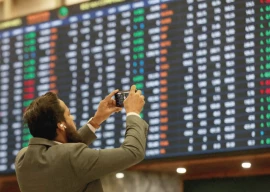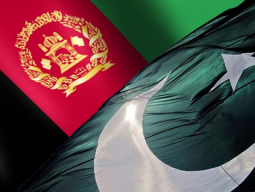
Pakistan announced on Thursday that it had reached a deal with China for a $2.3 billion commercial loan, marking the first major foreign inflow in recent months and indicating Beijing’s renewed commitment to financial viability of Islamabad.
The Chinese government has also withdrawn its condition that Pakistan cannot use the proceeds of the $2.3 billion commercial loan. It also agreed to reduce the interest rate on the loan by 1% to around 3.8%. This has provided a sigh of relief to the finance ministry that lobbied for two months to get back the loan, which it repaid in March this year.
“Good News: The terms and conditions for refinancing of RMB 15 billion deposit by Chinese banks (about US$ 2.3 billion) have been agreed,” tweeted Finance Minister Miftah Ismail on Thursday.
He said that the inflow was expected shortly after some routine approvals from both sides, which would help shore up the foreign exchange reserves.
Pakistan had repaid the $2.3 billion commercial loan in March in the hope to get it back in April. But China had placed a condition that the money cannot be used due to weakening of the external sector position of Pakistan.
Pakistan can use the money, said Ismail, adding that Foreign Minister Bilawal Bhutto and Prime Minister Shehbaz Sharif played a role to convince China to extend the loan.
In March 2019, the China Development Bank had extended the commercial loan for three years at six-month China Shanghai Interbank Offered Rate (SHIBOR) plus 2.5%. A senior finance ministry official said that Beijing has now agreed to reduce the rate by 1%.
At the current 6-month SHIBOR rate of 2.32% + 1.5%, the lending rate now comes to around 3.8%, which is better than charged by Saudi Arabia for its $3 billion deposits.
It was a major foreign inflow, which would take the foreign exchange reserves back to double digits. The reserves slipped to $9.7 billion last week.
During the first 10 months of the current fiscal year, Pakistan had received an amount of $2.6 billion in foreign commercial loans from banks. This will now jump close to $5 billion.
Overall, Pakistan received $15.5 billion in loans from foreign creditors during the July-April period of current fiscal year. Around 85% of the new gross foreign loans were aimed at bridging the budget deficit and supporting the foreign exchange reserves, which remain at the critically low level of $10.2 billion.
Ismail has hoped that the revival of the IMF loan would address Pakistan’s gross financing needs issue, which are estimated at around $36 billion till June next year.
Moody's – the international credit rating agency, on Thursday affirmed Pakistan's B3 local and foreign currency debt ratings but changed the outlook to negative from stable.
The decision to change the outlook to negative is driven by Pakistan's heightened external vulnerability risk, according to Moody's. This showed uncertainty around the sovereign's ability to secure additional external financing to meet its needs.
Meanwhile, Pakistan's central bank said on Thursday that its liquid foreign exchange reserves had fallen by $366 million to $9.7 billion.
In the week to May 27, reserves decreased due to an external
debt repayment, the bank said in a statement.
Total liquid foreign reserves stood at $15.7 billion, of which commercial banks held six billion.



















COMMENTS
Comments are moderated and generally will be posted if they are on-topic and not abusive.
For more information, please see our Comments FAQ